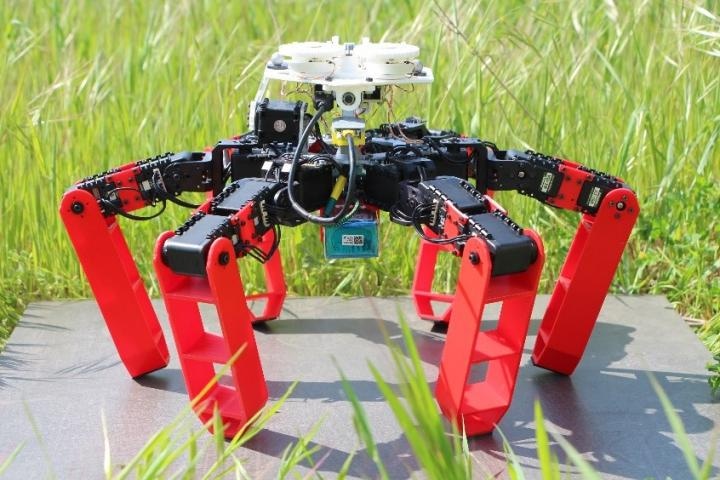Feb 14 2019
Ants’ eyes are sensitive to ultraviolet radiation and polarized light, unlike human eyes that are impervious to both. These ants use light to locate themselves in space.
 Antbot, the first walking robot that moves without GPS. (Image credit: Julien Dupeyroux, ISM (CNRS/AMU)
Antbot, the first walking robot that moves without GPS. (Image credit: Julien Dupeyroux, ISM (CNRS/AMU)
Particularly, Cataglyphis desert ants locate their food by covering several hundreds of meters in the desert in direct sunlight and then return back to their nest in a straight line, without getting lost anywhere. Pheromones, which cannot be used by the ants, emerge only when the temperature is likely to burn the slightest drop. Ants' remarkable navigation talent depends on two pieces of data—the heading is measured with a kind of “celestial compass” to direct themselves using the polarized light of the sky, and the distance covered, determined by merely counting steps and integrating the speed of movement in relation to the sun determined optically by their eyes. Heading and distance are the basic pieces of data that, once integrated, enable them to easily return to the nest.
The latest robot, called AntBot and created by researchers from CNRS and Aix-Marseille University (AMU) at ISM, mimics the remarkable navigation capacities of the desert ants. The robot is fitted with an optical compass, which is utilized to establish its heading through polarized light, and through an optical movement sensor oriented to the sun to determine the distance covered.
Using this data, the robot has been shown to have the potential to investigate its environment like the desert ants, and to return to its base on its own, with a precision of around 1 cm after covering a total distance of 14 m.
The robot weighs just 2.3 kg and possesses six feet for improved mobility, enabling it to move in challenging environments, accurately where deploying drones and wheeled robots can prove to be extremely difficult, like rugged terrain, disaster areas, exploration of extraterrestrial soils, and so on.
The scientists developed the optical compass which is sensitive to the polarized ultraviolet radiation of the sky. AntBot uses this “celestial compass” to measure its heading with a precision of 0.4° by cloudy or clear weather. The navigation accuracy realized with minimal sensors shows that bio-inspired robotics indeed possess a considerable capacity for new breakthroughs. In this study, there were three developments. New, innovative, and unusual optical sensors have been developed, a unique robot has been designed, and AntBot provides new insights on how desert ants are able to navigate, by testing a number of models, which biologists had envisioned to imitate this insect. Before investigating promising applications in the automobile industry or in aerial robotics, for instance, developments have to be made like how to use this robot over longer distances or at night time.
The study was supported by the Direction Générale de l'Armement, CNRS, AMU, Provence-Alpes-Côte d’Azur region and from ANR under the Equipex/Robotex project.